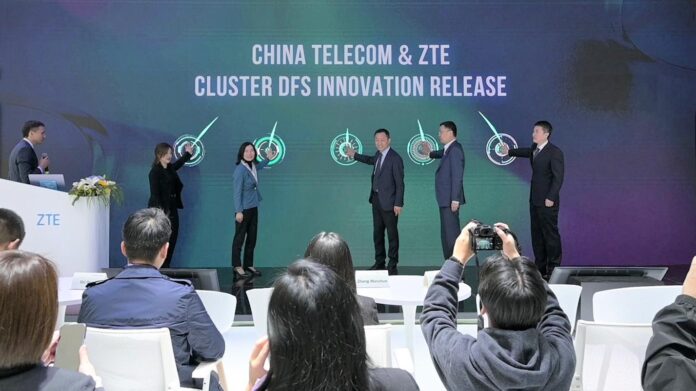MWC, Barcelona—ZTE has released a 5G-Advanced solution, dubbed Cluster DFS, in partnership with Chinese carrier China Telecom. According to ZTE, the new offering will facilitate the development of specific B2B and B2C services using a single 5G network.
China Telecom claims to have deployed the world’s largest 5G SA network with more than 1 million 5G base stations based on a RAN-sharing strategy. The Chinese carrier noted it continues to focus in the B2B segment, with the number of private 5G networks hitting over 3,000, and commercial projects in this segment totaling 9,000 by the end of 2022.
ZTE explained that that the new solution will be key as the service-level agreements (SLAs) requirements for the provision of 5G for industrial verticals such as smart manufacturing or smart grid are different from the requirements for the provision of 5G services for consumers. ZTE further explained that it launched the new solution given to the increasing complexity of 5G networks and to enable a coordinated development of B2B and B2C services on a single network and deliver differentiated service experiences.
Huang Lilian, general manager of network development and sharing department at China Telecom, said that a previous commercial trial of the solution showed that Cluster DFS has increased the uplink throughput of B2B applications by 60-80% while ensuring stable B2C experiences.
ZTE said Cluster DFS provides precise on-demand user experiences for consumers and enterprises based on its AI capability to coordinate the development of B2B and B2C on 5G commercial networks.
China Telecom and rival operator China Unicom had previously signed an agreement to co-build and co-share their 5G networks. According to the latest available statistics, China Telecom added a total of 5 million 5G subscribers during the first months of the year to take its total 5G subscribers base to 273 million. During 2022, the telco added a total of 80.16 million 5G subscribers.

